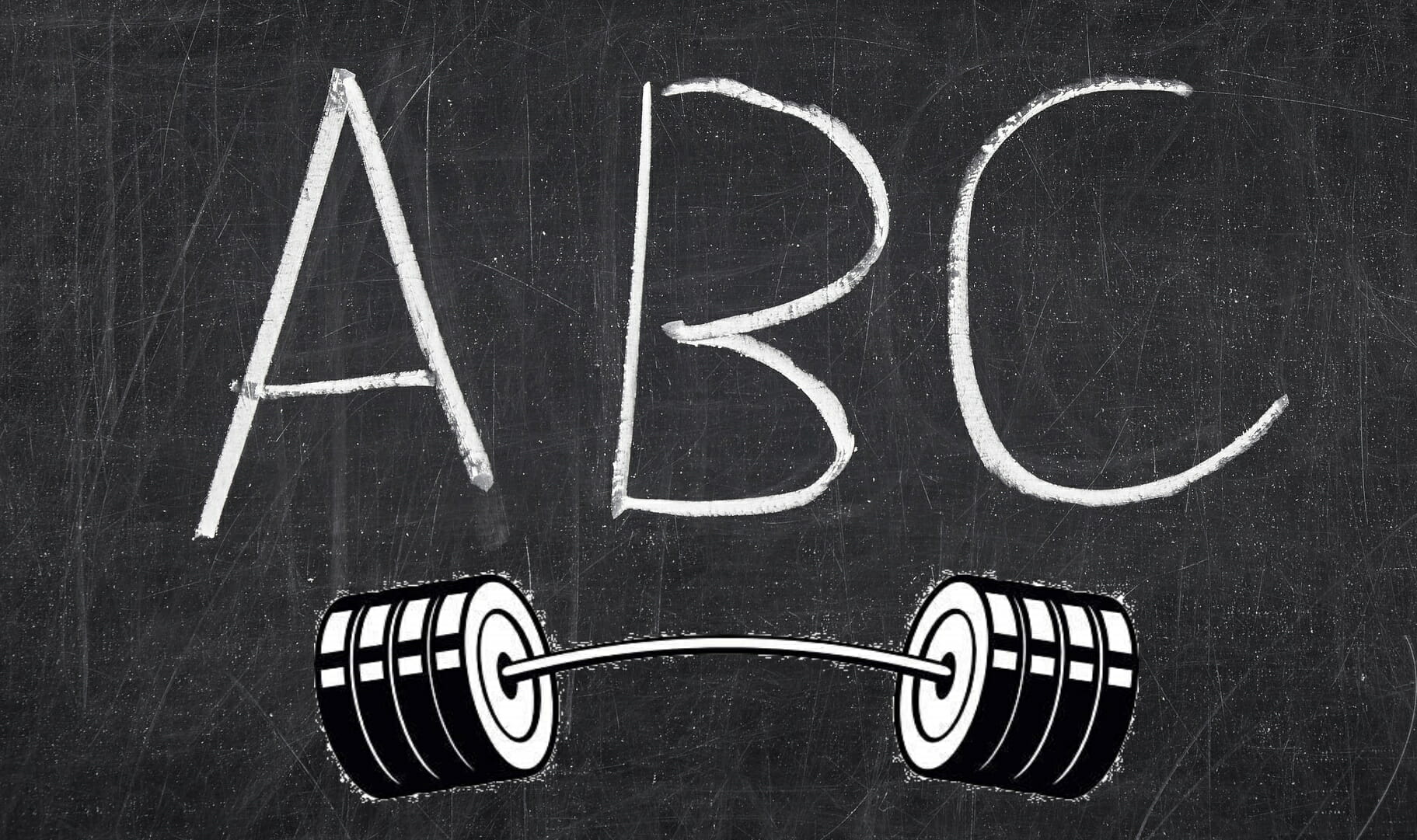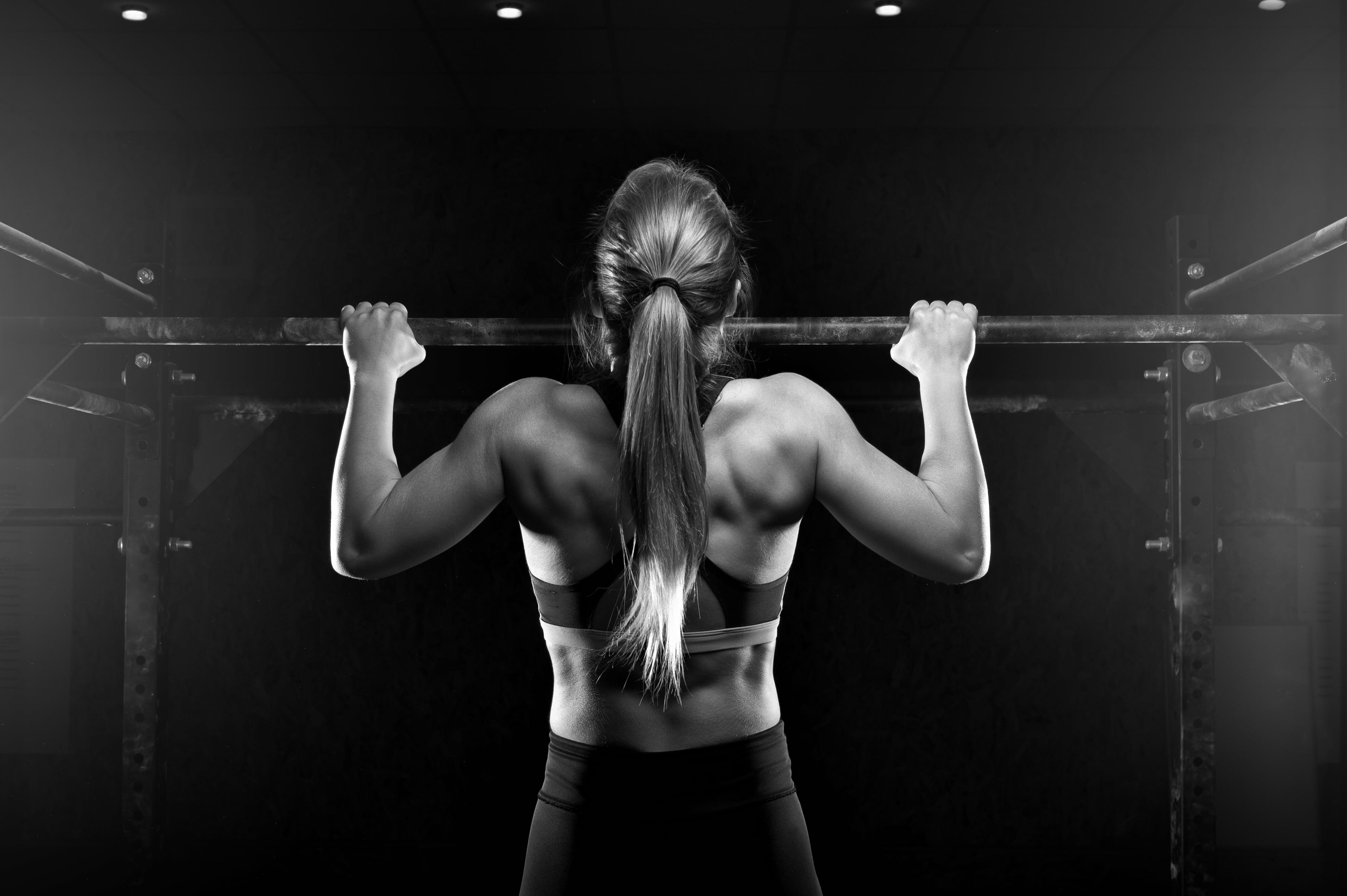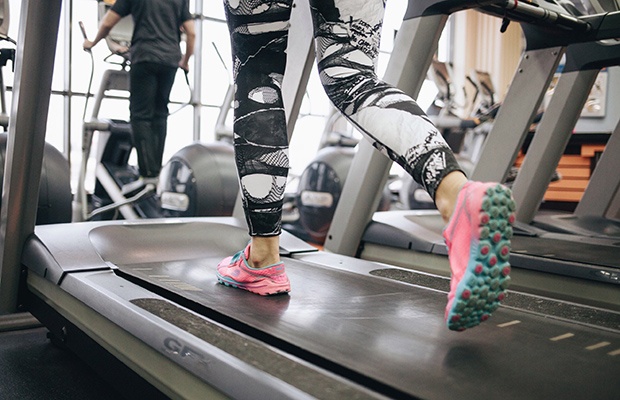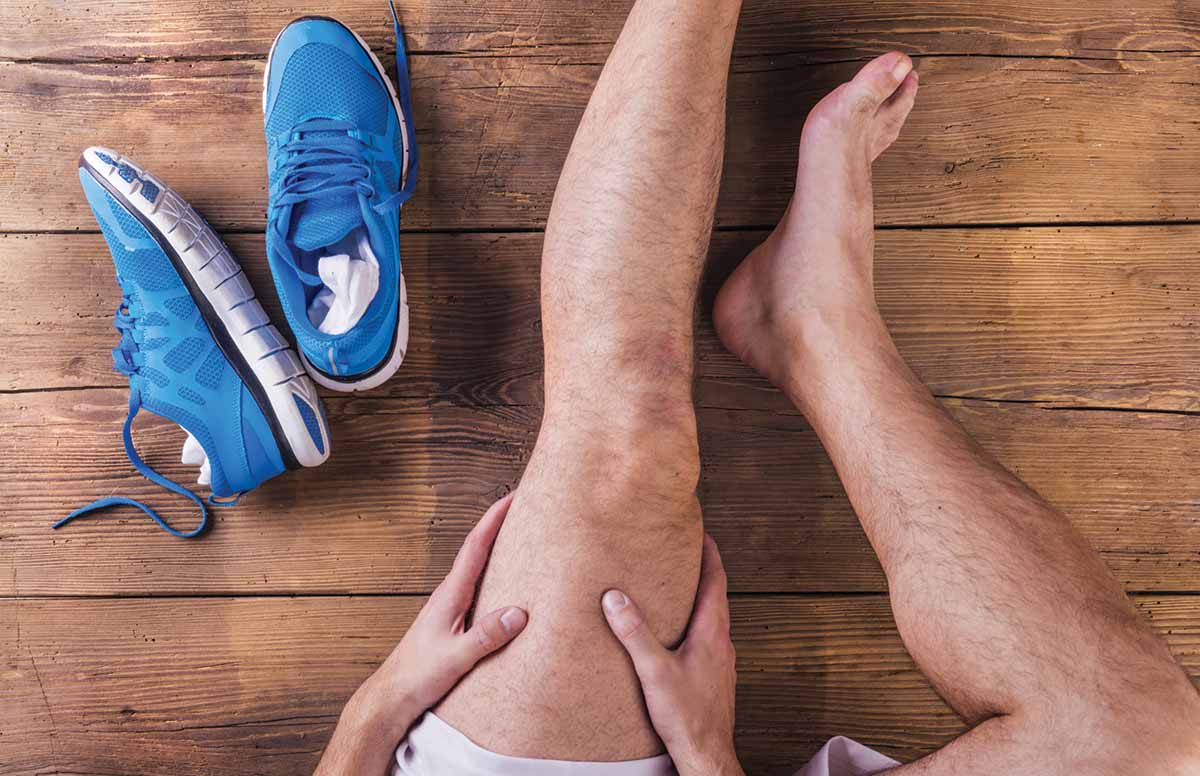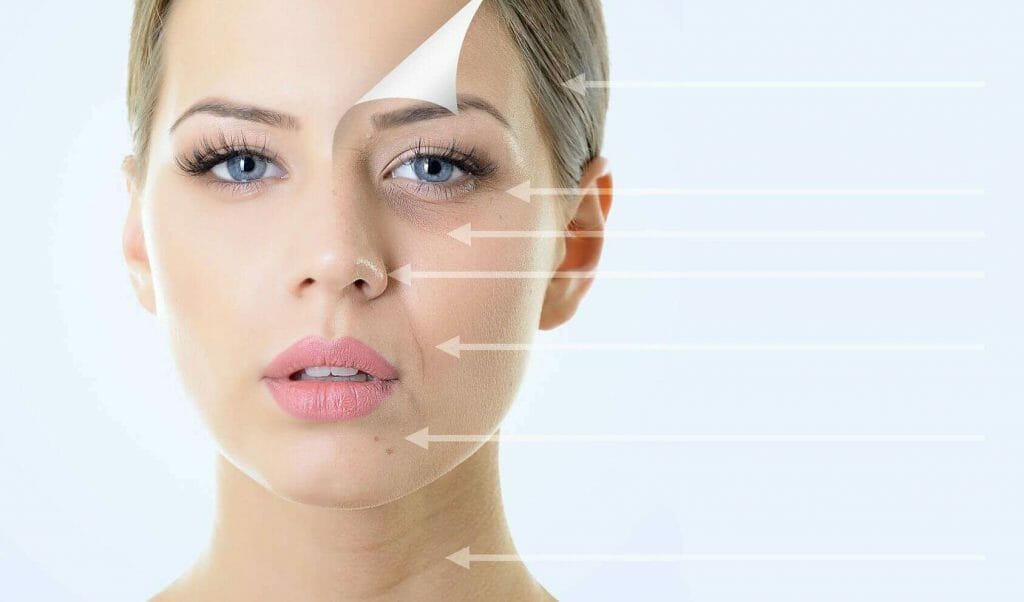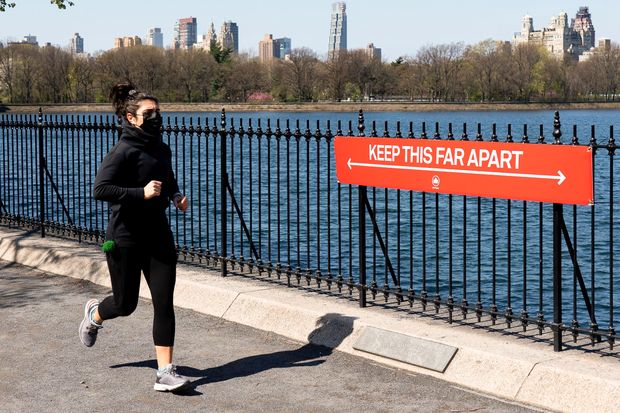
It’s Day One of the reopened future, and as people have always done when it’s time for a new start, you head to the gym. Well, hold on. We should begin before Day One, because you’ll actually have booked this time slot the week before. It’s good for 90 minutes. Don’t be late.
You grab a door handle wrapped in germ-repelling vinyl and walk inside. A Bluetooth-enabled beacon at the front desk recognizes your phone and checks you in. The receptionist takes your temperature and hands you a towel, plus a colored wristband that’ll help the staff remind you when it’s time to go. Hopefully you brought some water with you, because touchless bottle fillers have replaced the drinking fountains.
Read: Pandemic dining: temperature checks, time limits, and dividers
You put your things in a locker and then walk out onto a fitness floor where alternating treadmills are unplugged, where roaming maintenance workers with specialized sprayers coat the equipment in clinging antiseptics, where extra-strength-Purell dispensers lurk in every sight line, where people lifting weights wear latex gloves, and where gym-logo masks dot the faces of all the people who forgot their own.
Later, you’ll head into a yoga class with a dozen other students, spaced out in a studio built for 50. The teacher will be physically distant but attentive; you’ll sense the breathing around you and follow the lead of your classmates for the poses you don’t know. You’ll remember what it’s like to be in a room designed for a single thing, with other people who are also there for that thing. Then you’ll go back to the locker room, grab your stuff, and head home to shower. No flip-flops necessary!
This is the gym of tomorrow (and the next day, at least). By the standards of a gym, it’s not terrible. Cleaner, quieter, less crowded. One question, though: Why are you here?
Read: Don’t close parks. Open up streets.
The pandemic locked up gyms and fitness studios, and inspired coaches, trainers, and teachers everywhere to take their livelihood online, many for the first time. Clients with abruptly altered schedules and budgets found themselves making adaptations of their own. Centralized digital platforms—some run by gym companies—have boomed, and now they have an opening to turn fitness into the same kind of collective, homogenized experience that league sports, office life, movies and television, dating, video games, and shouting at your relatives have become.
Freed from the encumbrances of physical infrastructure, fitness can happen anywhere, in any form, anytime. In the short term, the costs and benefits are flying every which way. Over time, the options we have for working out—and the options we don’t—are likely to settle into something very different from what we might have expected only a few months ago, and to do so faster and under greater pressure than they would have without the coronavirus.
I’m a person who exercises a lot, so I’ve been following these developments closely. I’ve found many things to love about working out in isolation. But still, I miss the gym. So I decided to try to figure out what exactly it is that I miss, and whether it’s gone forever.
“Welcome to my house,” says Robin Arzon one Saturday morning over video, cackling. Robin—to her fans, she is just Robin—has a propulsive cackle, part of a small arsenal of affects that present, delightfully, in a kind of mathematical sequence, sprint by 30-second cycling sprint. Robin is a head instructor for the fitness platform Peloton: emperor and evangelist but also chief influencer. My colleague Amanda Mull wrote last year that she “works a crowd like Ariana Grande making a surprise appearance at your local mega-church.” In modern fitness, as in so much else, the operative entities are “brands,” and Robin is herself a significant brand—one tightly coupled with Peloton, the force behind a fleet of hundreds of thousands of stationary, digitally enabled bikes that retail for $2,245. (Peloton also makes treadmills, and an app that you can use for various activities without its equipment.)
Robin’s home is also, at the moment, a television studio that is broadcasting to a Peloton bike in my home. I ordered the device in March, when weeks of anxiety annealed into American lockdown. I am across the city from her. Both of us have cool plants next to our bikes. We’re in 23,000 other people’s homes, around the world, too. And where else are we? We’re at the gym.
Read: The fitness trend that is a mirror
If Robin had a class at the actual, regular gym and you stumbled into it without warning, you’d never stumble out: The wattage would fry you. Teachers on the major fitness platforms are, as a rule, highly telegenic; they’re broadcast talent, and their charisma has to carry. But Robin—Robin will get your heart beating three times a second, cackle, cue the tears (hers and yours), and be laughing again, all by the end of this Coldplay song. That’s what we do here.
Peloton has been very successful at putting expensive fitness hardware in people’s homes, and the pandemic has compounded that advantage, at least among those who can still afford both the hardware and the fitness. Sales were up 66 percent last quarter. “To the extent that for so many years there was no competition, it was almost mind-boggling,” Tom Cortese told me. He is the company’s chief operating officer and one of its five founders, and lately his responsibilities have included shipping out the A/V equipment for emergency mini-studios to a handful of instructors so they can continue to teach new classes from their basement or living room.
“Think about a swan, right?” the running instructor Jess Sims, who is broadcasting Peloton classes from her studio apartment, explained to me. “Above the water, the swan looks graceful and clear and calm and everything is beautiful. And then under the water, it’s going a mile a minute—the legs, they’re doing all these crazy things. And that’s kind of my apartment.”
At the other end of the production-value spectrum, there’s Zoom—all legs, no swan. In March, every yoga and Pilates instructor you’ve ever encountered, every dance teacher, every personal trainer, plus a great number of people who aren’t any of these but influence as if they were, made the jump to Zoom, to Instagram Live, to YouTube. This flourishing was a playful counterpoint to the surrounding catastrophe. One early-lockdown weekend, I took a free dance class from a teacher who seemed to be in a Scandinavian cabin. My friend Charlie had often told me about these classes in their live form, in a style called “gaga,” which is meant to rid the dancer of self-consciousness. There we were, dozens of us, swooping and whirling and leaping in little frames on everybody’s laptop. It was ridiculous. It was the kind of thing you could get away with in the first fresh days of apocalypse.
Read: I joined a stationary-biker gang
These brands and others like them suddenly have even more riding on Variis and similar platforms than they did before, just as smaller studios and solo instructors are in thrall to Zoom and Instagram. Gyms the world over have been closed and dueless for months. Even established players will come through with scars, if they come through at all: Gold’s Gym is restructuring under bankruptcy, and 24 Hour Fitness is said to be considering the same. Planet Fitness, a franchise business, has softened its growth forecast. Equinox isn’t paying rent. More than 36 million Americans have filed for unemployment since March; many of them may decide that fitness is something they no longer want to—or can—pay for.
“I can’t imagine that [if] we go through wave after wave of shelter in place that the companies will even exist,” Jim Rowley told me about gyms like these—including Crunch Fitness, where he is the CEO. (He described many of the reopening protocols I used to paint the picture at the beginning of this article.) Crunch has had a digital platform since 2011, and Rowley said it has seen a surge in usage since lockdown began. But he came up through the gym business, and he’s a gym guy.
“I think Peloton’s great. I applaud them for what they’ve done,” Rowley said. But “I don’t want to ride a bike every single day for my exercise. I want variety. I want to do TRX, I want to do dumbbells, I want to take a class, I want to take yoga, I want to take a spin class, I want to lift weights, I want to do Olympic weight lifting. And that’s why the traditional, you know, big-box gym like Crunch—that’s all those things under one roof.”
Okay, but for now, how about all those brands in one app? A Variis class unfolds like an Instagram ad for a moon colony, with what its press kit calls “dynamic, multi-camera shots and concert-grade lighting.” You have to give Equinox’s brand custodians credit: They understand that fitness is a story—challenges arrive, we conquer them, we are changed—and that it can be told big. I am certain that my cardiovascular system has never produced more energy, or done so with greater symmetry and ferocious steadiness, than at Equinox, in a dark cycling studio with a sweet sound system playing concert Beyoncé and a 30-person simulated race on the projector screen up front. It takes enormous discipline to edit an experience like that, to keep it tight—live or on a screen. Equinox, and its brands, is disciplined. If Robin is Ariana Grande, Variis is the movie with Robert Pattinson on a spaceship.
But perhaps concert and cinema metaphors aren’t the right ones in these Netflix days of fitness.
“If you go to a gym, you’re there to work out,” the Equinox and Variis strength teacher Andrew Slane told me. That’s “a little more challenging when you’re doing it with your fiancé eating breakfast and you just moved your table out of the way in your 500-square-foot studio apartment. You really, really have to hold yourself accountable, and some days you’re just not feeling it.”
Or as Michelle Green of Toronto put it when we asked our app and newsletter readers about fitness in quarantine:
I can pause the toughest instructor mid-sentence, while I open the window, get a glass of water, fiddle with my equipment, blow my nose, take my inhaler, drink [a] glass of water, tie my shoe, get too hot, get another glass of water, and, inevitably, head to the bathroom.
This is true, of course, of any digital fitness experience. The antidotes—which are really antidotes to the complacency and inertia we battle in deciding to try to exercise at all—are simple and familiar: attentive teaching. Atmosphere. Other people to keep you honest. A narrative you can identify with.
So now we have to figure out where to find our antidotes.
You Might Also Like:
Virtually every digital fitness experience is still a simulation of something people used to do together. The chemistry of in-person interaction is so important that Peloton, for example, normally records classes with live students in its Manhattan studios. (It barred those participants in March and shut down studio production altogether in early April, before starting up its home broadcasts.) “We feed off the energy in the room,” Denis Morton, a cycling and yoga instructor there, told me. “When there’s no people in the room with you, you really have to have a deep well.”
Morton, who is Peloton’s joke-a-minute hunky-coach archetype, was businesslike when we spoke on the phone this month. So I was struck later when I replayed a class of his from the first half of March, one with people in it. His monologue included the illustrative economy of Jack White’s songs (“when you do something right, you don’t have to do it all day”); the architecture of glycogen reserves (“closets to store energy,” which we remodel and expand through careful training); a not-insubstantial anecdote about Lenny Kravitz’s drummer (“I bet she’s glad she had glycogen in those closets”); and a vivid sensorial depiction of what it’s like to have to pee very, very badly. It was the most fun you’ll ever have in 45 minutes of indoor endurance training.
It’s not that you couldn’t spin a charming antic monologue and/or teach a fitness class in an empty room, but Morton is right about the resources you’d have to tap. Variis’s Slane told me that he’s taught himself to invest the camera with personhood, “like if you ever had an imaginary fight with somebody else in the shower.” Teaching for Variis got easier, he said, when the company started placing a few extra team members in the classes (filmed before the pandemic)—to model the instructor’s cues for the viewer, and to give the teacher a sense of how his instructions were landing.
These are all work-arounds for a simple problem: the lack of physical co-presence. That problem radiates across the category: The Pilates teacher on Zoom asks whether a movement is okay for you to do with your injury, but you’re on mute. You wonder if the clicking noise on your Peloton crank is normal, but no one else is within earshot. You take a bathroom break and just never bother to go back, because who will ever know? “The student starts to feel like, I am just a blip on the screen,” my yoga teacher Cooper Chou told me. He’s the kind of person whose warmth reaches across every room he walks into. I went all the way to the gym for his class on Christmas Day. He’s not teaching online.
Some approaches, intriguingly, embrace the fact that no one else is around, and just help you move. An app called Aaptiv gives audio cues that you can follow without staring at a screen. Fitbod logs your weight lifting and suggests fresh muscle groups to work out, with simple illustrative GIFs and tips on form; a year-long subscription costs less than an hour with a trainer. The game Zombies, Run! supplies a narrative reason to, well, run. Then, of course, there’s Nike Run Club, one of the most popular workout apps. And for all the frictions of Zoom, many thousands of flowers have bloomed there lately; some will survive, and some of those will be real innovations. I’ve personally connected with two yoga teachers I adore, and their dogs, through Zoom. (Speaking of flowers, I grew up in Utah and built my cycling legs on a hillside in Los Angeles; in many places, people will just keep exercising outdoors, as they’ve always done.)
But what will this all look like in a year or two? The rosy version is that we get the best of it all—a long-lost yoga teacher here, a mountain hike there, mini-lectures on lactate thresholds in the morning, a sanitized and distanced trip to the gym at night. Proponents of digital fitness like to talk about convenience and flexibility and access, and they’re right: Going to the gym is a bit of a pain in the best of times, and not everyone feels welcome. If Peloton’s Christine D’Ercole had been on a bike in my basement when I was a geeky kid, opening her hill-climb ride with Enya and preaching a credible love for your body, I might have found a place among athletes before I was 24. Jim Rowley of Crunch is also right: We limit ourselves when we do the same thing every day.
Think of all the hurdles to the mix-and-match vision, though. A key ingredient, the gym, is gravely imperiled—all these sanitary measures notwithstanding, you really couldn’t design a better place for the coronavirus to spread. The overproliferation of expensive, and expensively marketed, new digital platforms will quickly narrow in a world of drastically lower consumer spending. We may well end up in fitness, as we have in other areas of entertainment, with a few players that control most of it. They’ll know when and how we work out; they’ll know that a low-cadence hill climb chases people out of cycling class as fast as a Kanye West song brings them in; they’ll release new features every two weeks, like any tech company; they’ll find ways to cross-promote with all the other deep-pocketed brands that weathered the storm. The Peloton family will grow, and we’ll spend Saturday mornings at Robin’s house. (This weekend, in fact, ESPN and Peloton “have combined to bring celebrities and athletes together for an epic, all-out, 20-minute Peloton race.”)
One of the quieter casualties of these pandemic months is dedicated space. Hospitals, grocery stores, and warehouses have held on to clear functions, but for everything else, there’s your apartment. Confinement leads to a kind of versatility; it means we figure out how to use the same room to work and raise kids and play and sleep, the same ingredients to make three dinners in a row, the same video software to conduct every kind of social exchange. It also means that the functions of office and restaurant and church and beach and bar hover over the same sad little seafoam Ikea carpet, mirrored in the same screen, shadowed by the same cool plant.
Hold this in contrast to the gym, which is designed for only one thing: It’s where you go when you want to be with people who can help you get stronger, and who have the best tools to do it. It’s not incidental that being there means exposing yourself to the breath of others; that is, in fact, largely the point. The breath of language, the breath of yogic pacing, the heaving breath of the dead-lifter, the rhythmic breath of the cyclist in the studio, with the music thrumming through their every stroke: beat, breath, left; beat, breath, right. We who still have our breath: Where will we go?
This article was originally published here


